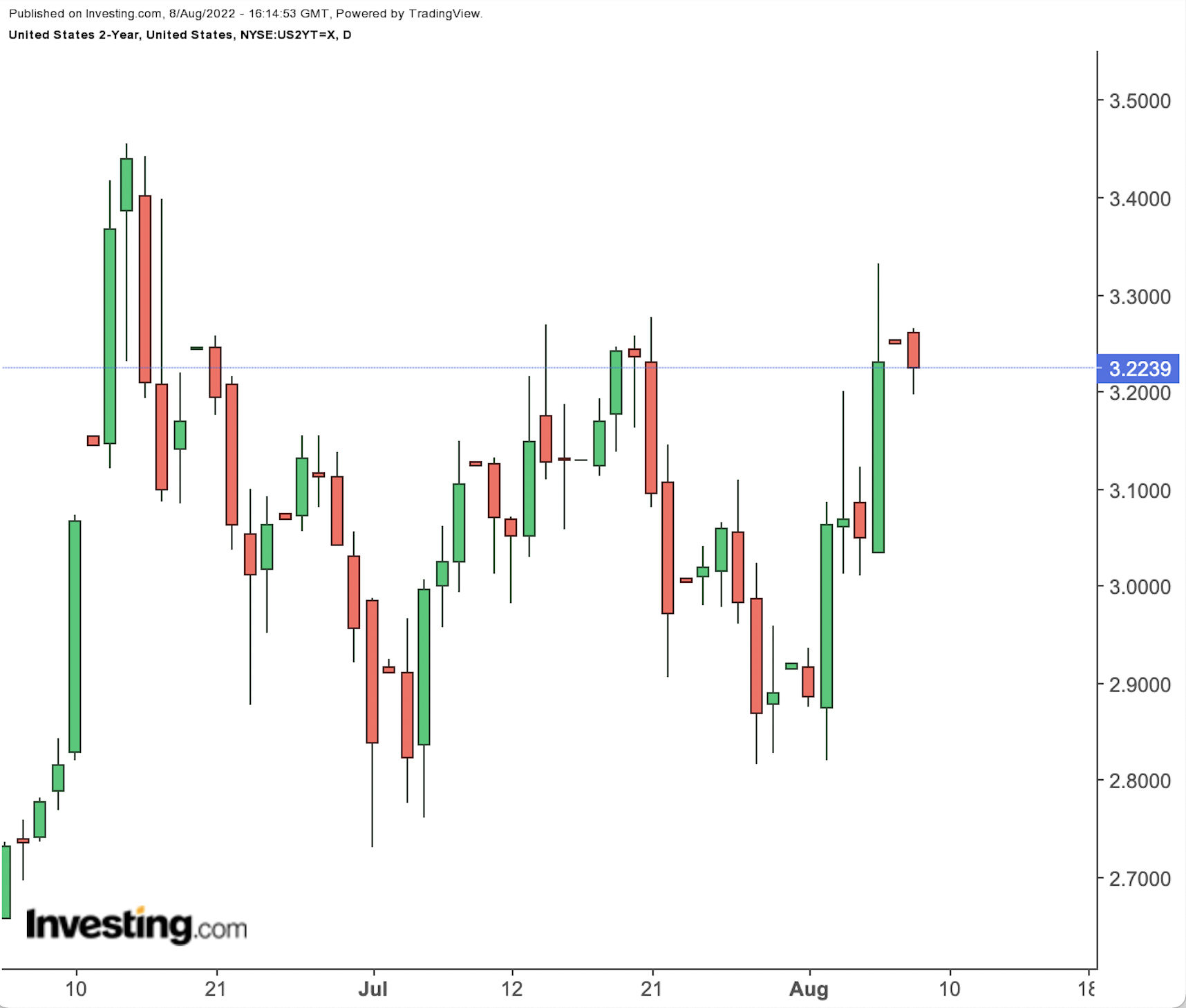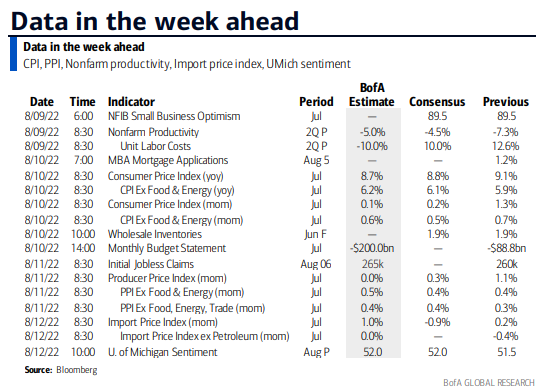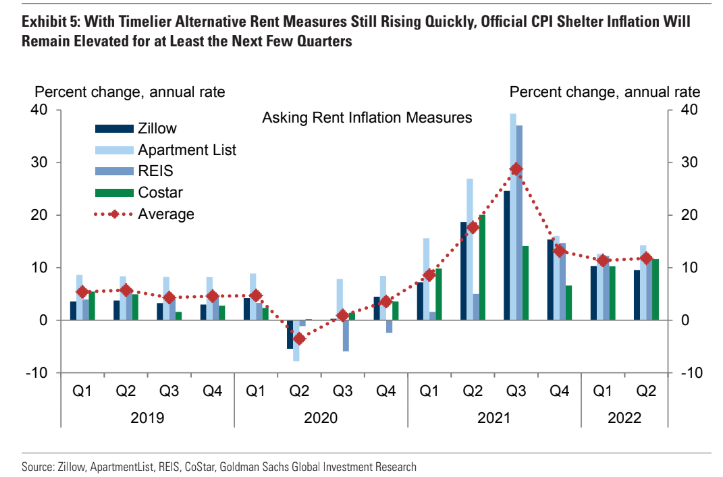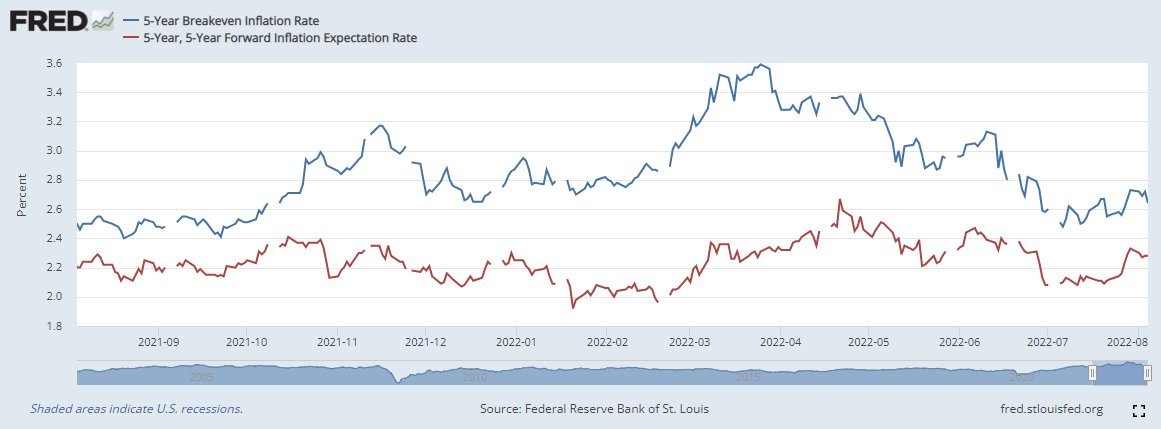- July’s NFP report was more than double market expectations
- Bonds plunged but equities performed surprisingly well to cap off last week
- This week’s CPI data will shed more light on the chances of a soft landing
Last week’s stunning jobs report makes Wednesday’s CPI data all the more interesting. Will consumer prices verify a still-hot economy amid the contrasting backdrop of back-to-back quarters of negative GDP growth? The pandemic continues to wreak havoc on what used to be somewhat steady economic gauges. Last Friday’s strong employment data was, of course, met with tremendous bond market selling, as the U.S. 2-year note surged from near 2.8% to above 3.2%. Traders now see the Fed Funds rate climbing toward 3.65% by early next year, according to the CME Group’s FedWatch.
NFP Report Reaction: Short-Term Treasury Note Yields Surge

Source: Investing.com
The stock market reacted much more favorably than many investors would have guessed. I’m sure pundits figured equities, particularly high-duration growth shares, would have plunged in response to higher market rates as stocks did so many times during the first half of the year. That did not happen this time.
The S&P 500’s ability to weather higher yields last Friday might actually give Fed Chair Jerome Powell more ammo to hike rates without sending the market and economy into a tailspin. Are stocks finally OK with higher interest rates? Wednesday’s inflation report could be the ultimate tell.
Economists expect just a 0.2% month-on-month rise in headline CPI. Lower gasoline prices and tamer food costs help to drastically cut the advance compared with June’s 1.3% whopper of an advance. Core CPI, which excludes the volatile food and energy segments, is seen as climbing an uncomfortable 0.5%. PPI data will hit Thursday morning.
This Week’s Major Economic Data: CPI Wednesday, PPI Thursday

Source: Bank of America Global Research
As the average cost of a gallon of gas at the pump crosses back below $4, down each day since the S&P 500’s mid-June low, the stickier shelter and wage components will likely result in elevated CPI prints for the balance of the year. Analysts at Goldman Sachs see rent prices in particular boosting headline and core inflation in 2022.
Official CPI Likely To Remain High Due To Lagging Shelter Component

Source: Goldman Sachs Investment Research
Looking further out, traders’ expectations of future inflation have steadied. Perhaps that easing of uncertainty helps investors gauge the intrinsic value of securities. The 5-year break-even inflation rate is well off the March high near 3.6% and only modestly above the low a month ago near 2.4%. The 5-year forward break-even is near the middle of its one-year range, making the 10-year break-even rate 2.46% as of last week’s settle. Nevertheless, Treasury rate volatility remains extremely high.
Inflation Expectations: Steadying After Volatile First Half

Source: St. Louis Federal Reserve
The Bottom Line
All investors want to know if stocks are in a new bull market; was June 16 a low or the bottom? I assert we will get a better handle on the all-important question based on how stocks react to Wednesday morning’s CPI data. The Fed is in a better position than ever to hike rates as a soft landing might just be possible given a historically tight labor market and a cooling inflation rate.
Disclaimer: Mike Zaccardi does not own any securities mentioned in this article.
